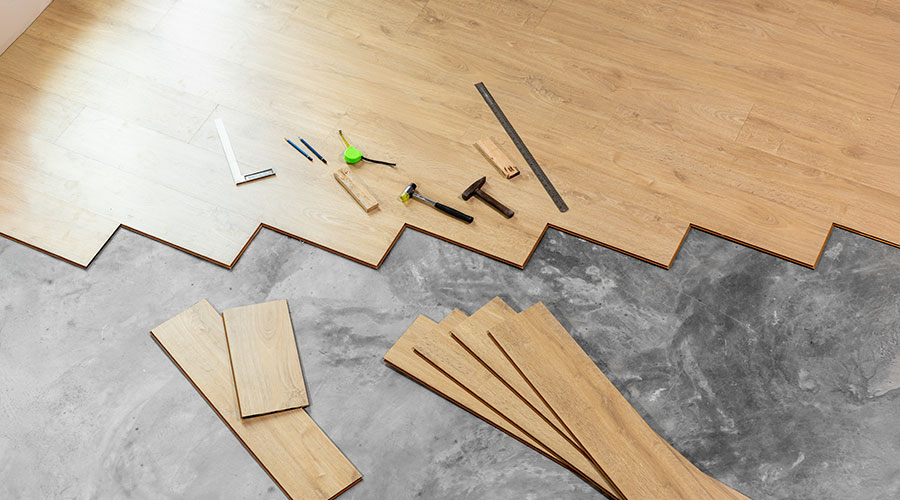Keep Flooring Projects On Time And On Budget
Part 1 of a 2-part article explaining strategies for successful flooring projects.
Flooring projects are expected to meet deadlines and stay on budget. But sometimes the wrong steps are taken to save time or money on flooring, especially when the project is running late, and the result is problems after installation that require far more time or money to address than was saved by cutting corners. A better route is to focus on getting the right flooring installed in the right way.
If old flooring is being replaced, it’s important to remember that factors that weren’t a concern when the flooring went down may now be critical items. It may be that the flooring being replaced is either carpet or a vinyl tile that has served a useful life and has performed as expected. Now you want to create a new look with products that may not have existed years ago, and that situation poses some risks. So let’s take a look at what you should be concerned with and what to do about it.
When taking up old flooring, be aware of residual backing material still stuck to the substrate and residual adhesives. If vinyl asbestos tiles are removed and the old black cut back adhesive was used, you may have to abate the substrate. You could hire an abatement company to chemically abate the material, or the cut back can be dry scraped and encapsulated. With the first choice, if the abatement company uses a citrus solvent and surfactant rinse or an aliphatic solvent, these materials may deeply intrude into the slab and migrate back to the surface after the new floor is installed, compromising everything on top of the slab — the patch, the adhesive, the flooring material itself. The cost of correcting this problem would be far more than what the original job cost.
The other alternative is encapsulating the residue on the substrate. There are products on the market that can be applied to the substrate that will encapsulate or insulate the cut back. This has been done for years and avoids the problems just described with solvents and rinses, but, even with encapsulation, if moisture vapor is coming through an on-grade or below-grade substrate, it can activate the cut back and create a mess of a failure. If this happens, the entire floor would have to come up, the substrate mitigated, a new cementitious surface applied with a moisture-mitigating product, and a new floor installed again. This can cost upwards of 10 times what was spent on the original installation.
Even if there is no cut back adhesive, moisture must be tested for, even when the old installation showed no signs of it. New flooring may have non-permeable backings (they don’t breathe) that trap moisture and cause a flooring installation to fail.
Another option is leaving old flooring in place and going over it. Sounds like a good idea if the flooring is well adhered, but if it is covered with a non-permeable material, conditions inherently present may now causes changes with another layer of flooring installed.
Related Topics:












